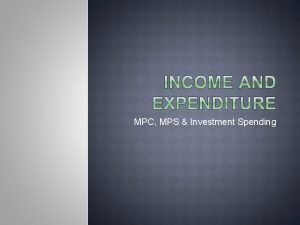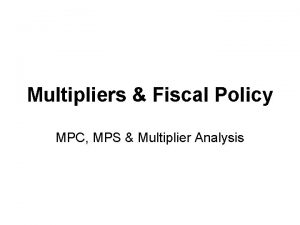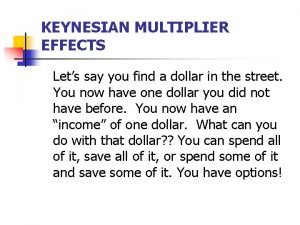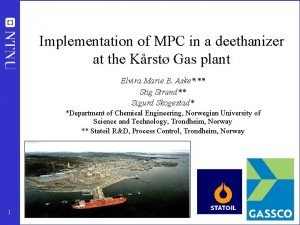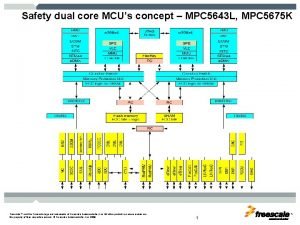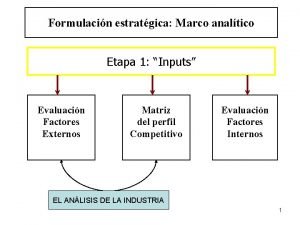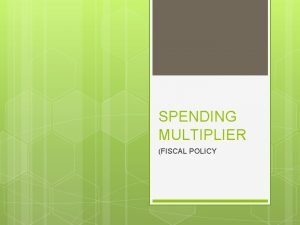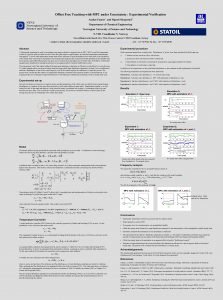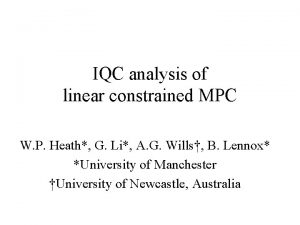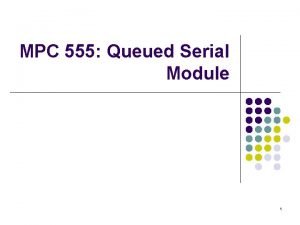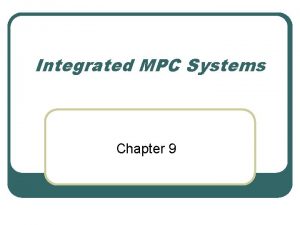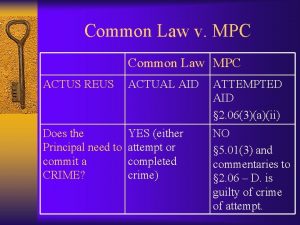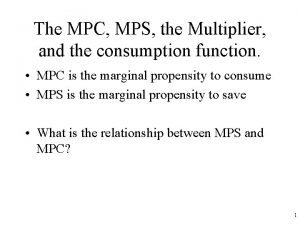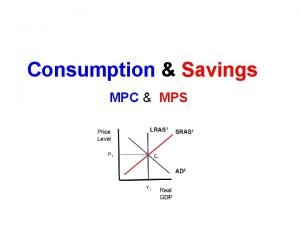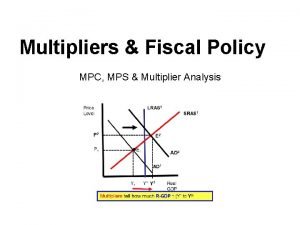AP Macroeconomics Fun With the MPC MPS and



































- Slides: 35

AP Macroeconomics Fun!!! With the MPC, MPS, and Multipliers

Disposable Income = DI • Net Income • Paycheck • After-tax income

Marginal Propensity to Consume (MPC) • The fraction of any change in disposable income that is consumed. New $ = new C • MPC= Change in Consumption Change in Disposable Income • MPC = ΔC/ΔDI

Marginal Propensity to Save (MPS) • The fraction of any change in disposable income that is saved. • New $ = new savings • MPS= Change in Savings Change in Disposable Income • MPS = ΔS/ΔDI

Marginal Propensities • MPC + MPS = 1 {i. e. every new $ is either spent (C) or saved. } –. : MPC = 1 – MPS –. : MPS = 1 – MPC • Remember, people do two things with their disposable income, consume it or save it!

The Spending Multiplier Effect • Why does this happen? –Expenditures and income flow continuously which sets off a spending increase in the economy. New $ hits the circular flow…. spending/earning/spen ding/earning….

The Spending Multiplier Effect –Ex. If the government increases defense spending by $1 Billion, then defense contractors will hire and pay more workers, which will increase aggregate spending by more than the original $1 Billion.

Calculating the Spending Multiplier • The Spending Multiplier can be calculated from the MPC or the MPS. • Multiplier = 1/1 -MPC or 1/MPS • Multipliers are (+) when there is an increase in spending and (–) when there is a decrease

EXAMPLE CALCULATIONS • Business report states that in 2009, consumers spent only 80 cents of each $, . : 1/1 -mpc (1/1 -. 80) or 1/mps (1/. 20) = ? • Now calculate spending multiplier for mpc or. 90; . 75; . 60; . 50

Marginal Analysis: What happens when a new unit is added? MPC = What % of new DI will people ______. MPS = What % of new DI will people ______. MPC + MPS will always = ______. The Spending Multiplier Effect Assume new marginal income is created. Example: tax cut. Assume that the tax cut averages a new $1000 of disposable income. Assume that the current MPC will be 90% and the MPS will be 10%. Notice: For each person getting a new $1000, several consumption events can occur from that single amount of money. How long will the pattern continue? Economists use the Spending Multiplier Formula to estimate the number of times the pattern will repeat before the amount shrinks to a point where new spending stops. The formula is: 1/1 -MPC, or 1/MPS. Therefore, if the MPC is. 9, how many new dollars of consumption will be created if society receives $1 million dollars? ____. How many new dollars of consumption will be created if the MPC is only. 5? ______. Person MPC MPS First to get the new $ Second to use that $ Third to use that $ Fourth to use that $ Fifth to use that $ Total So Far of the Original $1000

Calculating the Tax Multiplier • When the government taxes, the multiplier works in reverse • Why? – Because now money is leaving the circular flow • Tax Multiplier (note: it’s negative) • = -MPC/1 -MPC or -MPC/MPS • If there is a tax-CUT, then the multiplier is +, because there is now more money in the circular flow

Tax multiplier calculations • • -mpc/1 -mpc or –mpc/mps OR……… Assume a tax hike of. 90 to equal -. 90/10……. . answer? Now calculate other tax multipliers with mpc of. 80; . 75; . 60; . 50

MPS, MPC, & Multipliers • Ex. Assume U. S. citizens spend 90¢ for every extra $1 they earn. Further assume that the real interest rate (r%) decreases, causing a $50 billion increase in gross private investment. Calculate the effect of a $50 billion increase in IG on U. S. Aggregate Demand (AD) or AE. – Step 1: Calculate the MPC and MPS • MPC = ΔC/ΔDI = . 9/1 =. 9 • MPS = 1 – MPC =. 10 – Step 2: Determine which multiplier to use, and whether it’s + or • The problem mentions an increase in Δ IG. : use a (+) spending multiplier – Step 3: Calculate the Spending and/or Tax Multiplier • 1/ 1 MPS = /. 10 = 10 – Step 4: Calculate the Change in AD/AE • (Δ C, IG, G, or XN) * Spending Multiplier • ($50 billion Δ IG) * (10) = $500 billion ΔAD/AE

MPS, MPC, & Multipliers • Ex. Assume Germany raises taxes on its citizens by € 200 billion. Furthermore, assume that Germans save 25% of the change in their disposable income. Calculate the effect the € 200 billion change in taxes on the German economy. – Step 1: Calculate the MPC and MPS • MPS = 25%(given in the problem) =. 25 • MPC = 1 – MPS = 1 -. 25 =. 75 – Step 2: Determine which multiplier to use, and whether it’s + or • The problem mentions an increase in T. : use (-) tax multiplier – Step 3: Calculate the Spending and/or Tax Multiplier • -MPC/ -. 75/ = -3 MPS = . 25 – Step 4: Calculate the Change in AD • (Δ Tax) * Tax Multiplier • (€ 200 billion Δ T) * (-3) = -€ 600 billion Δ in AD/AE

MPS, MPC, & Multipliers • Ex. Assume the Japanese spend 4/5 of their disposable income. Furthermore, assume that the Japanese government increases its spending by ¥ 50 trillion and in order to maintain a balanced budget simultaneously increases taxes by ¥ 50 trillion. Calculate the effect the ¥ 50 trillion change in government spending and ¥ 50 trillion change in taxes on Japanese Aggregate Demand or AE. – Step 1: Calculate the MPC and MPS • MPC = 4/5 (given in the problem) =. 80 • MPS = 1 – MPC = 1 -. 80 =. 20 – Step 2: Determine which multiplier to use, and whether it’s + or • The problem mentions an increase in G and an increase in T . : combine a (+) spending with a (–) tax multiplier – Step 3: Calculate the Spending and Tax Multipliers • Spending Multiplier = 1/MPS = 1/. 20 = 5 • Tax Multiplier = -MPC/MPS = -. 80/. 20 = -4 – Step 4: Calculate the Change in AD • [ Δ G * Spending Multiplier] + [ Δ T * Tax Multiplier] • [(¥ 50 trillion Δ G) * 5] + [(¥ 50 trillion Δ T) * -4] • [ ¥ 250 trillion ] + [ - ¥ 200 trillion ] = ¥ 50 trillion Δ AD/AE

Assume the Japanese spend 4/5 of their disposable income. Furthermore, assume that the Japanese government increases its spending by ¥ 50 trillion and in order to maintain a balanced budget simultaneously increases taxes by ¥ 50 trillion. Calculate the effect the ¥ 50 trillion change in government spending and ¥ 50 trillion change in taxes on Japanese Aggregate Demand or AE.

The Balanced Budget Multiplier • That last problem was a pain, wasn’t it? • Remember when Government Spending increases are matched with an equal size increase in taxes, that the change ends up being = to the change in Government spending • Why? • 1/MPS + -MPC/MPS = 1 - MPC/MPS = MPS/MPS = 1 • The balanced budget multiplier always = 1

Does a change in G have the same effect on GDP as a change in T? No – G has a greater effect! A change in G affects GDP directly by a multiple of the change in G. A change in T affects GDP by a multiple of less than the change in T. A change in T results in a change in Yd. Yd can be either spent (C) or saved (S); therefore, a change in T only affects GDP by a multiple of the change in C. The initial change in C is less than the change in T.

Determine the effect on GDP of an increase in G of $20 billion and the effect of a decrease in T of $20 billion. Assume the MPC =. 80 1/1 -. 80 = _____ 5 Multiplier = _____ • Effect of the increase in G: 20 _____ 5 100 increase X ______ = ______ • Effect of the decrease in T: 20 _____ 16 C _____ 4 S T of $20 billion Yd _____ 16 _____ 5 80 increase which is less than X ______ = ______ The increase of 100 from G.

What would be the effect on the economy (GDP) of a decrease of $100 billion in G. Assume the MPS =. 25 100 X 4 = $400 billion decrease in GDP • What would be the effect of an increase in taxes of $100 billion? Increase T of $100 billion decreases income (Yd) by 100 billion. That means consumers will decrease spending by $75 billion (. 75 x 100) and decrease saving by $25 bill. The $75 billion decrease in C X the multiplier of 4 = a $300 Billion decrease in GDP.

Determine the effect on GDP of equal increases (balanced budget) in both G and T of $50 billion. Assume an MPC of. 80. • Effect on Budget? balanced • Effect on GDP (economy)? Increase by $50 billion $40 billion 5 (. 80 x 50) • Multiplier = _____ C = _____ Effect of G: 5 x 50 = 250 billion increase in GDP Effect of T: decrease income by $50 billion; therefore, C decreases by $40 billion and S decreases by $10 billion. Therefore, $40 billion X 5 = 200 billion decrease in GDP Net effect: 250 – 200 = $50 billion increase in GDP

Key Idea: The balanced budget multiplier is 1 x G • An increase in G and T of $50 billion would 50 billion increase GDP by how much? ____ • A decrease in G and T of $30 billion would decrease GDP by how much? _______ $30 billion • Conclusion: A balanced budget increase in G and T (spending and taxes are equal) has expansionary an ______ effect on the economy. • A balanced budget decrease in spending and contractionary taxes has an _______ effect on the budget.

Multiplier Table • • Govt…. . Invstmnt Spndng… Tax MPC…. Multiplier…. Multiplier 0. 90 10. 0 – 9. 0 0. 80 5. 0 – 4. 0 0. 75 4. 0 – 3. 0 0. 60 2. 5 – 1. 5 0. 50 2. 0 – 1. 0

Key Formula: AE x M = GDP M = 1/MPS or 1/1 -MPC or GDP/ AE • If the GDP gap is $100 billion, how much must AE (C, I, G, or Xn) increase to return the economy to YF if the MPC =. 80? 5 M = 1/1 -MPC = 1/1 -. 80 = 1/. 20 = _____ AE x M = GDP 20 ______ X 5 ______ = 100 Billion

Key Formula: AE x M = GDP M = 1/MPS or 1/1 -MPC or GDP/ AE • If the GDP gap is $40 billion and the MPS =. 25, what amount must AE increase to close the GDP gap? 4 M = 1/MPS = 1/. 25 = _____ AE x M = GDP 10 ______ X 4 ______ = 40 Billion

Key Formula: AE x M = GDP M = 1/MPS or 1/1 -MPC or GDP/ AE • If the economy is in a recession and has a GDP gap of $50 billion, how much must government increase G to close the GDP gap and return to full employment, assuming an MPS of. 20? 5 M = 1/MPS = 1/. 20 = _____ AE x M = GDP 10 ______ X 5 ______ = 50 Billion

If $500 billion in AE $1000 billion in GDP, then how much would G have to reach a YF of $2000 billion? • $2000 B • • $1000 B $500 B $200 B $100 B Explanation: 1000/500 = 2 = Multiplier = GDP/ AE x Multiplier = GDP G x 2 = 2000 G = 1000

The value of the spending multiplier decreases when? A. Tax rates are decreased B. Exports decrease C. Imports decrease D. Government expenditures decrease E. The MPS increases The multiplier = 1/MPS 1/. 20 = 5 1/. 40 = 2. 5 As MPS increases, the multiplier decreases.

Which of the following best explains why equilibrium income will rise by more than $100 in response to a $100 increase in G? A. Incomes will taxes B. Incomes will C C. AE PL D. AE MS I E. budget deficit AE Multiplier effect – Spending becomes Income which is either Spent or saved; the New expenditure gives rise to more income, which leads to more spending. .

In a closed economy with no taxes in which the MPC is 0. 75, which of the following is true? APC = fraction of income spent =. 75 = 3/4 ths A. B. C. D. E. If income is $100, then saving is $75 If income is $100, then C is $50 If income is $200, then saving is $50 If income is 200, then C is $75 If income is $500, then S is $100 200 x. 75 = $150 in consumption, leaving $50 in saving.

Suppose that Yd is $1000, C is $700, and the MPC is 0. 60. If Yd increases by $100, C and S will equal which of C _ S the following? A. B. C. D. E. 420 600 660 760 280 400 320 440 340 YD = 1000 C = 700 S = 300 as a starting point Yd = 100 and MPC =. 60 (100) = 60 and S =. 40 (100) = 40 700 + 60 = 760 C 300 + 40 = 340 S

If at YF, government wants to increase its spending by $100 billion without inflation in the short run, it must do which of the following? A. B. C. D. E. T by greater than $100 B T by $100 B G has a greater effect T by less than $100 B on GDP than T; there- fore the T must be T by $100 B Greater than the G to by less than $100 B offset the increased G and prevent further Inflation.

If AE from 200 to 300 solely due to a change in G leads to a change in GDP of 1000 to 1500, which of the following is true? A. B. C. D. E. G = 100 GDP = 500 M = 5 G is 300 and the multiplier is 5 G is 100 and C increases by 500 G and GDP increase by 500 each C and GDP increase by 500 each

AP M/C QUESTION • An increase in the marginal propensity to consume causes an increase to consume • in which of the following? in • a. Marginal propensity to save • b. Spending multiplier • c. Saving rate • d. Exports • e. Aggregate supply

AC/DC MACROECONOMICS • http: //www. youtube. com/watch? v=Xg 0 z 5 RWb. AU • http: //www. youtube. com/watch? v=JQVf k. H-2 G-I • http: //educationportal. com/academy/lesson/themultiplier-effect-and-the-simplespending-multiplier-definition-andexamples. html#lesson
 Mpc mps 1
Mpc mps 1 Mpc mps
Mpc mps Mps ap macro
Mps ap macro Mpc master
Mpc master Tax multipler
Tax multipler Swagelok mpc
Swagelok mpc Maurine church coburn
Maurine church coburn Matriz mefe ejemplos
Matriz mefe ejemplos Multiplier formula
Multiplier formula Ria mpc
Ria mpc Mpc trnava
Mpc trnava Hybrid mpc
Hybrid mpc Hybrid mpc
Hybrid mpc Mpc library database
Mpc library database Mpc košice
Mpc košice Manufacturing planning and control
Manufacturing planning and control Inleiding
Inleiding Mpc5643
Mpc5643 Jednostki odległości w astronomii
Jednostki odległości w astronomii Matriz de perfil competitivo ejemplo
Matriz de perfil competitivo ejemplo Strejcova metoda
Strejcova metoda Mpc
Mpc Mpc is
Mpc is Mpc multiplier calculator
Mpc multiplier calculator Offset free mpc
Offset free mpc Marjinal tüketim eğiliminin küçük olması
Marjinal tüketim eğiliminin küçük olması Mpc nursing
Mpc nursing Marjinal gei
Marjinal gei Mpc
Mpc Gemini mpc
Gemini mpc Mpc trnava
Mpc trnava Mpc lab berkeley
Mpc lab berkeley Rockwell mpc
Rockwell mpc What is the role of mps
What is the role of mps Mps microsystems
Mps microsystems Planejamento desagregado
Planejamento desagregado

